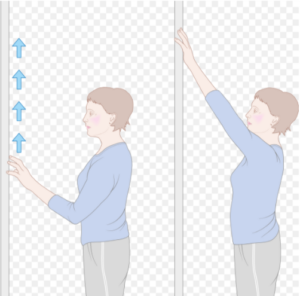
A breast reconstruction surgeon explains why some women have much difficulty lifting their arms overhead after double mastectomy + reconstruction and what to do about this.
For some women who undergo a bilateral mastectomy with reconstruction, the doctor-ordered restriction of avoiding overhead motions really does result in mobility issues once that restriction is removed.
A woman who wasn’t seriously strength training prior to a double mastectomy + reconstruction will have a far more difficult time regaining full range of motion than will a woman who has a long history of lifting weights going into the operating room.
Inactivity As the Problem
“It’s true that inactivity often leads to weakened muscles and a sense of muscle stiffness,” says Rola E. Eid, DO, FACOS, Medical Director of Plastic and Reconstructive Surgery & Plastic Surgeon, Cancer Treatment Centers of America at Southwestern Regional Medical Center.
“The human body can be somewhat analogous to a piece of machinery, such as an automobile or work tractor,” continues Dr. Eid.
“Imagine the effect of leaving your favorite automobile stationary in the driveway for a considerable length of time, or a piece of farm equipment sitting idle in a field.
“It can become increasingly difficult for parts to remain lubricated and move smoothly and efficiently.
“The human body is a wondrous work of mechanics and it functions best as we maintain movement, keeping our joints lubricated and our muscles strong and flexible.
“Movement is an integral part of the recovery process following surgery.”
Regaining Overhead Movement After Bilateral Mastectomy + Reconstruction

Freepik.com, katemangostar
“For my patients recovering from immediate breast reconstruction following mastectomy, I ask women to begin performing gentle stretching the day after surgery,” says Dr. Eid.
“Stretching allows women to move their arms and shoulders throughout their respective pain-free ranges of motion.
“Also, I have patients meet with a physical therapist soon after surgery, as some patients may benefit from a more tailored program of movements and stretching exercises.
“One example of a gentle stretching exercise involves facing a wall and using the fingertips to slowly ‘walk’ one’s hand up the wall as far as is tolerable.

Wall walk. Cancer Research UK
“For patients who experience muscle spasms or muscle stiffness, muscle relaxers may be prescribed and then taken about one hour prior to stretching.
“Since movement is so important during the recovery process, we find that relaxing these spastic muscles, especially in the chest, causes some women to be more amenable to performing these vital movements that help maintain their mobility and functionality.
“I also recommend to breast reconstruction patients, utilizing an anti-inflammatory to help reduce swelling and inflammation in the chest and arms, which in turn may help to increase the range of motion in, say, their shoulder joints or arms.
“Again, patients can meet with a physical therapist to help optimize the range of motion in their affected joints and speed the path to full recovery.
“An important caveat to remember throughout the recovery process: No lifting or pulling greater than five pounds, as such force tends to engage the chest muscles and may strain the incisions that were placed during a mastectomy followed by immediate breast reconstruction.”
For more information on bilateral mastectomy plus immediate reconstruction and other treatments for breast cancer, contact Cancer Treatment Centers of America at (855) 993-3381.
 Dr. Eid received advanced training in numerous plastic surgery procedures, including breast reconstruction and microsurgery at the Mayo Clinic, the University of Texas Southwestern Medical Center, and Duke University Medical Center.
Dr. Eid received advanced training in numerous plastic surgery procedures, including breast reconstruction and microsurgery at the Mayo Clinic, the University of Texas Southwestern Medical Center, and Duke University Medical Center.
 Lorra Garrick is a former personal trainer certified by the American Council on Exercise. At Bally Total Fitness she trained clients of all ages for fat loss, muscle building, fitness and improved health.
Lorra Garrick is a former personal trainer certified by the American Council on Exercise. At Bally Total Fitness she trained clients of all ages for fat loss, muscle building, fitness and improved health.
.











